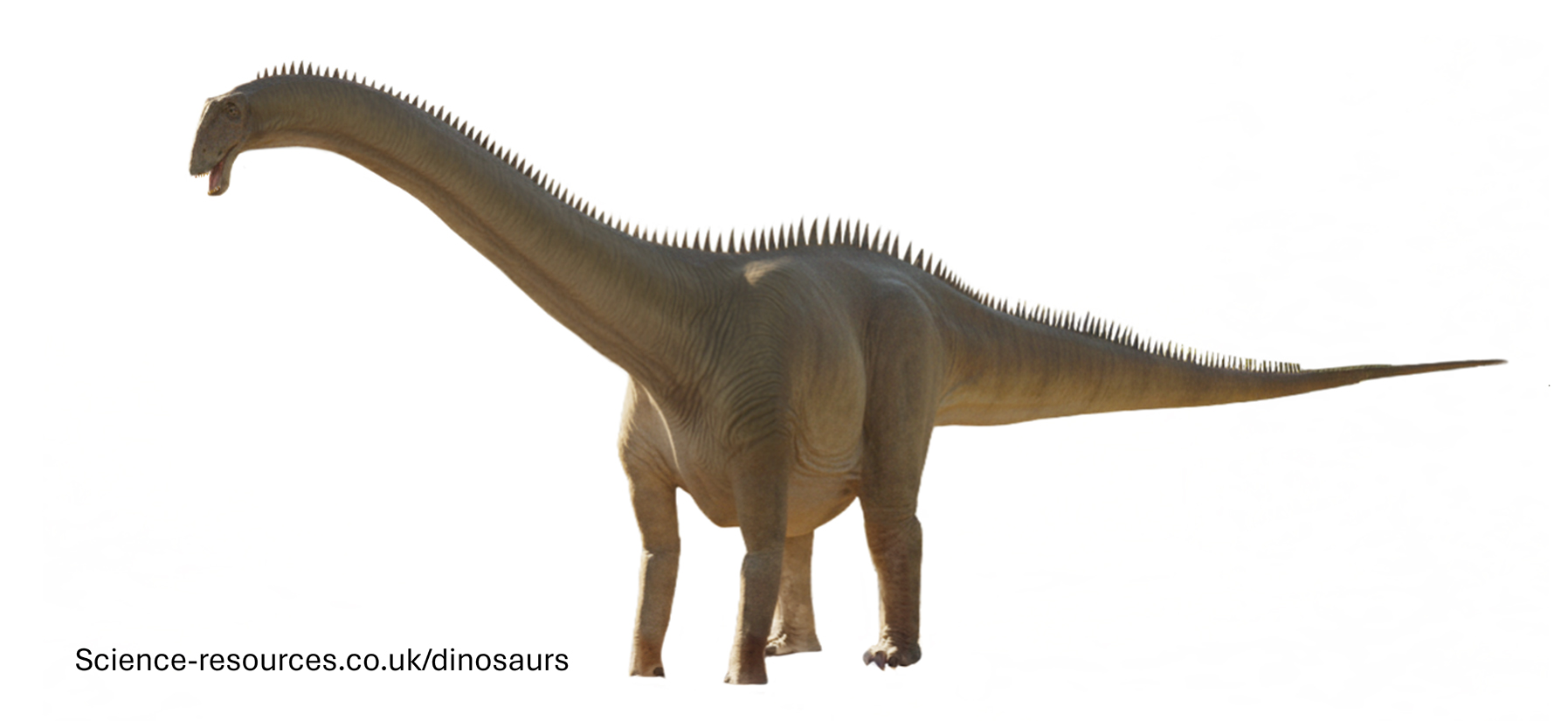You may also be intrested in: Free Dinosaur games
Dinosaur facts: Sauropod Dinosaurs
You may also be intrested in: Free Dinosaur games
What are Sauropod Dinosaurs?
Here are some notable Sauropod Dinosaurs: Apatosaurus was a massive dinosaur measuring about 21 metres in length. It had a long neck and tail, and a robust body. Apatosaurus used its peg-like teeth to strip leaves from trees and bushes. Brachiosaurus was one of the tallest dinosaurs, reaching heights of up to 12 metres and lengths of around 25 metres. It had longer front legs than back legs, allowing it to reach vegetation high in trees. Brachiosaurus had spoon-shaped teeth for feeding on a variety of plants. Diplodocus was an incredibly long dinosaur, measuring up to 27 metres. It had a long, whip-like tail and a long neck. Diplodocus used its pencil-like teeth to graze on soft plants and leaves. Argentinosaurus was one of the largest dinosaurs ever, reaching lengths of up to 40 metres. This herbivore roamed the forests of South America. Camarasaurus was a large dinosaur measuring about 18 metres in length. It had a stout body and a short, deep skull. Camarasaurus used its chisel-like teeth to chew tough vegetation. Alamosaurus was a huge dinosaur measuring up to 21 metres in length. It had a long neck and tail, and a heavy, muscular body. Alamosaurus fed on a variety of plants, using its strong jaws to process tough vegetation.
Notable Sauropod Dinosaurs
Apatosaurus
Brachiosaurus
Diplodocus
Argentinosaurus
Camarasaurus
Alamosaurus
Sauropod Dinosaur Features
Q1: What are Sauropod dinosaurs?
A1: Sauropod dinosaurs were giant herbivorous dinosaurs known for their long necks, small heads, and long tails. They walked on four legs and were some of the largest animals to ever exist.
Q2: What notable species are included in Sauropod dinosaurs?
A2: Notable species include Apatosaurus, Brachiosaurus, Diplodocus, Argentinosaurus, Camarasaurus, and Alamosaurus.
Q3: How did Sauropod dinosaurs adapt to their environments?
A3: They adapted with features like long necks for reaching high vegetation, strong legs for supporting their weight, and specialised teeth for feeding on a variety of plants. Their enormous size also helped protect them from predators.
Q4: What did Sauropod dinosaurs eat?
A4: They primarily ate various types of plants, including leaves, branches, and other vegetation.
Q5: What other animals lived alongside Sauropod dinosaurs?
A5: They lived alongside other herbivorous dinosaurs, carnivorous dinosaurs, flying reptiles, and various early mammals. Sauropod Dinosaur FAQ
You may also be intrested in:
Tags: Sauropod Dinosaurs, Sauropod Dinosaur facts, long-necked dinosaurs


